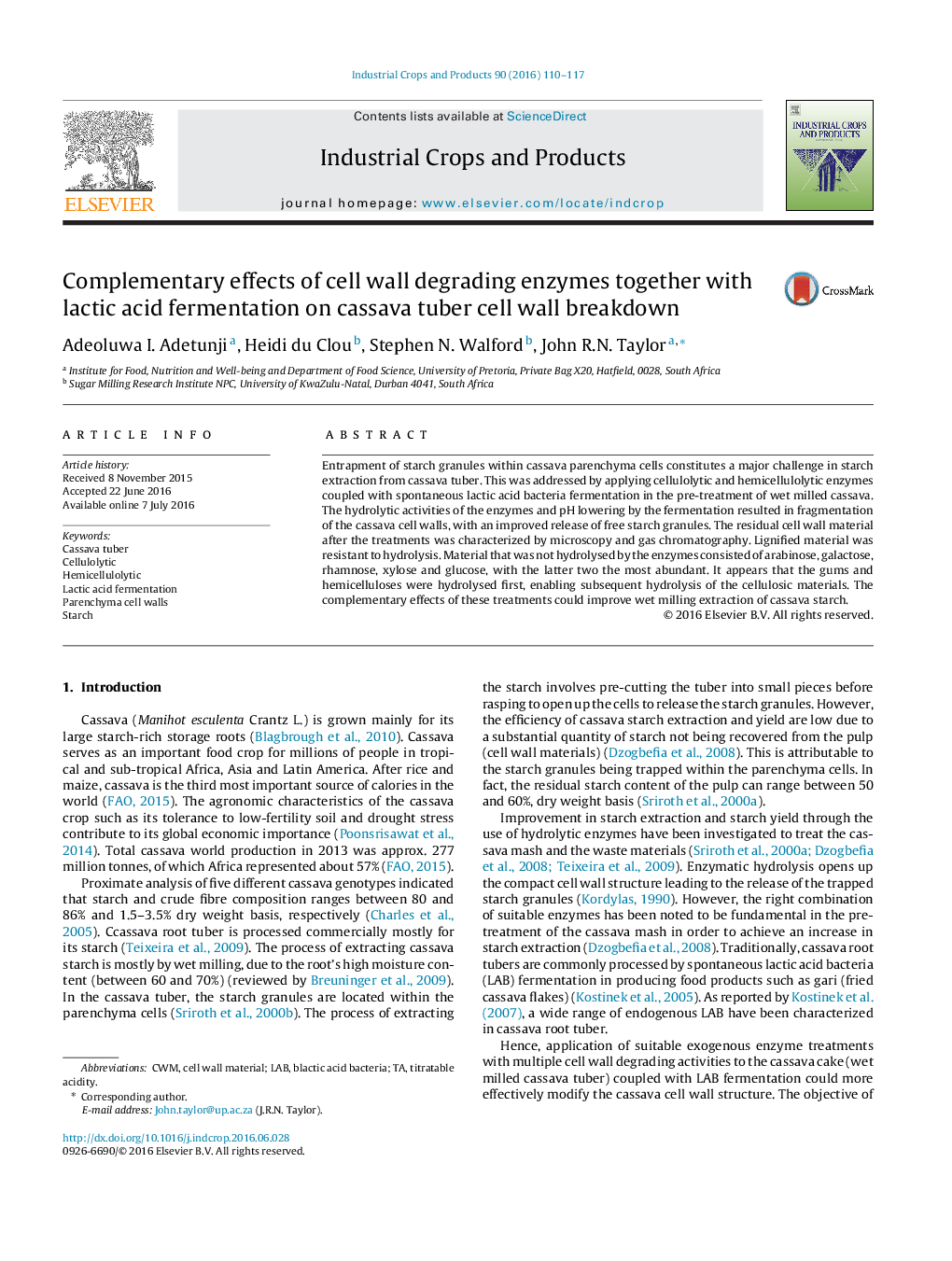| Article ID | Journal | Published Year | Pages | File Type |
|---|---|---|---|---|
| 4512096 | Industrial Crops and Products | 2016 | 8 Pages |
•Combining cell wall degrading enzymes with fermentation enabled starch release.•Lowering of pH by fermentation optimizes enzyme activity.•Lignified cell wall materials were resistant to the cell wall degrading enzymes.•Gum and hemicellulose hydrolysis exposes cellulosic material to breakdown.
Entrapment of starch granules within cassava parenchyma cells constitutes a major challenge in starch extraction from cassava tuber. This was addressed by applying cellulolytic and hemicellulolytic enzymes coupled with spontaneous lactic acid bacteria fermentation in the pre-treatment of wet milled cassava. The hydrolytic activities of the enzymes and pH lowering by the fermentation resulted in fragmentation of the cassava cell walls, with an improved release of free starch granules. The residual cell wall material after the treatments was characterized by microscopy and gas chromatography. Lignified material was resistant to hydrolysis. Material that was not hydrolysed by the enzymes consisted of arabinose, galactose, rhamnose, xylose and glucose, with the latter two the most abundant. It appears that the gums and hemicelluloses were hydrolysed first, enabling subsequent hydrolysis of the cellulosic materials. The complementary effects of these treatments could improve wet milling extraction of cassava starch.
